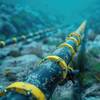In the wake of announcements by the Federal Reserve about the need for more natural gas, Saipem Group, Single Buoy Moorings, Bluewater Offshore, Spectrum Energy Services, Hoegh LNG and Aker Kvaerner will discuss radically new concepts for receiving terminals at an industry meeting in Houston, June 19 and 20.
"The LNG industry has typically required at least five years to put new supply chains into place. With local community opposition to onshore terminals running high, these lead-times may grow even longer," said Bob Nimocks, president of Zeus Development Corporation, a company that is conducting industry research to investigate new designs. "Consequently, the industry is searching for other ways to get gas into pipeline grids, and terminals located far offshore are one such way."
Two proposed liquefied natural gas (LNG) terminals -- one in the Gulf of Mexico and one offshore California -- will use existing infrastructure to expedite construction and operation. The LNG can come from distant gas reserves located as far away as West Africa and Australia.
The Gulf of Mexico terminal proposed by Freeport-McMoRan Sulphur LLC will use a large surface platform built as part of an offshore sulfur mine. The company is preparing a Deepwater Port license application to receive and process LNG and compressed natural gas shipments. The facility will be able to store very large amounts of natural gas underground. Vice President David Landry will provide a review of the project during the Houston conference, which is entitled LNG: Non-Traditional Concepts for Receiving and Regasification.
The proposed California terminal will use a depleted gas-production platform connected to an undersea pipeline offshore Oxnard. Crystal Energy has signed a long-term lease to use Platform Grace, set in federal waters 11 miles offshore. Bill Perkins, president of the company, will provide a cost build up of their project during the conference.
In addition to these two projects, numerous new designs -- running the spectrum from manmade islands, to permanently moored floating storage ships, to modified LNG tankers that can pump and vaporize LNG directly into subsea pipelines -- will be presented.
Featured videos

Tracking Foreign Vessels Working in the U.S. Jones Act Market

Inside the Electrified Truckable Tug

Inmarsat Enhances Service to Drive Digitalization
Subscribe for
Maritime Reporter E-News
Maritime Reporter E-News is the maritime industry's largest circulation and most authoritative ENews Service, delivered to your Email five times per week









